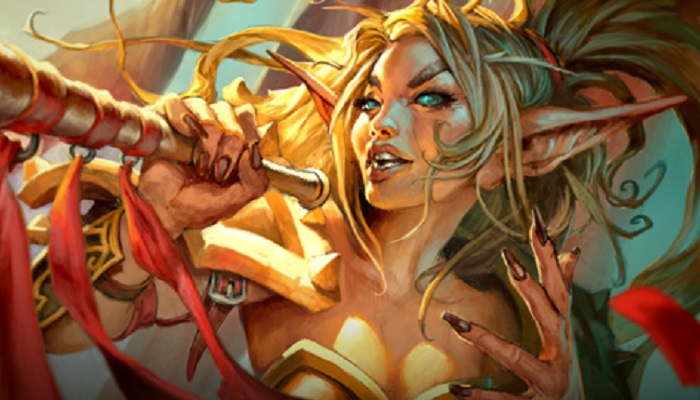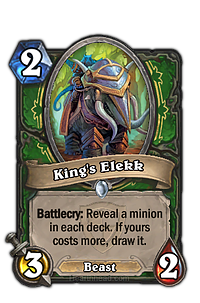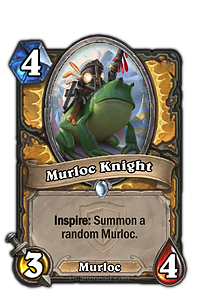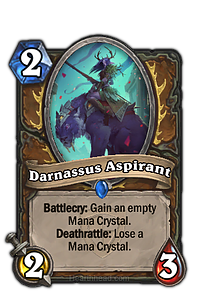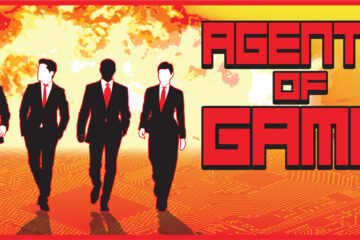This Deck of the Week is a bit unorthodox. Instead of bringing a new deck to play, I wanted to take a chance to give a bit of a post-mortem of The Grand Tournament expansion. Why would I do that you might ask? The Grand Tournament has only been out for a month, it’s too soon critique it, you might say. Well, the main reason I’m writing about my opinion of TGT already is that after only a month, there are no innovative decks to write about already. That is a problem.
When Hearthstone’s first expansion, Goblins vs. Gnomes came out, Blizzard expanded on the “Mech” card type, adding new synergies and new cards to capitalize on those synergies. They also added the “Spare Part” mechanic that gave a random bonus card. There was lots of experimenting with new synergies and almost every class had new deck archetypes show up. In fact, for two classes, their current most competitive decks originated in GvG, Mech Shaman and Oil Rogue. That’s also exactly why those two decks are at the bottom of the competitive scene right now.
The main reason I feel TGT was lackluster is because both it’s new mechanics, Inspire and Joust, just don’t work. Jousting not only felt shoehorned in a little because of the tournament theme, but even before release, players had doubts about the effectiveness of the mechanic. We already examined why on paper, jousting looked unappealing, but it really boils down to the cards being weak, sometimes even if you win the joust. I looked over a jousting guide at hearthhead.com where they feel only 5 of the total 8 Joust cards are worth mentioning. The only card that I see on a regular basis is King’s Elekk in midrange Hunter decks, which are not very popular right now. Joust cards without the bonus effect are rarely worth the mana cost, and the only way to improve your chances of winning a joust is to put more high cost minions in your deck, something the meta simply doesn’t encourage right now.
Inspire was the other mechanic introduced in TGT, and while it was more successful than Jousting, it didn’t really have much of an effect. Again, the problem is that the cards are simply too weak for their mana cost. Take the Murloc Knight, easily the best “Inspire” card in the game. It looks great, 4 mana for a 3/4, plus two tokens every time you use your hero power. Well, there’s a catch. There are several other 4 mana cards that easily deal with a 3/4 minion and survive, so in order to get value from Inspire, you usually hold on to the card until turn 6. So, the true cost of the card is 6 mana for 4/5 worth of stats and a random murloc card. While there are worse ways to spend 6 mana (Kidnapper comes to mind), unless you manage to get more than one Inspire activation, the stats are on the low side of 6 mana cards. Savannah Highmane, possibly the best 6 mana card in the game for example, is a total of 10 attack and 9 health. That’s quite a difference in power, and they are both class cards.
While there are a few standout cards that were released with TGT, none of them use either of these mechanics or synergies. As a result, most competitive decks have largely stayed the same. Darnassus Aspirant is the only card that seems to have shuffled up the previous big three of Warrior, Warlock, and Hunter. This card alone has given druids both mana ramp-up and early board presence. Unfortunately, besides adding in two copies of Darnassus Aspirant, most druid decks look the same as they did before TGT. The big three now consists of Warrior, Warlock, and Druid, with Warrior and Warlock still being the strongest classes. For having an additional 132 cards to choose from, 1 card making a difference on the competitive scene doesn’t make me feel like this expansion was a success.
Next week, I’ll take a look at what each class gained (or didn’t gain!) from The Grand Tournament expansion. If you have a favorite card I might have overlooked, or simply love the new cards from TGT and want to tell me I’m dead wrong, leave a comment, or tweet me @AGRitterific.

